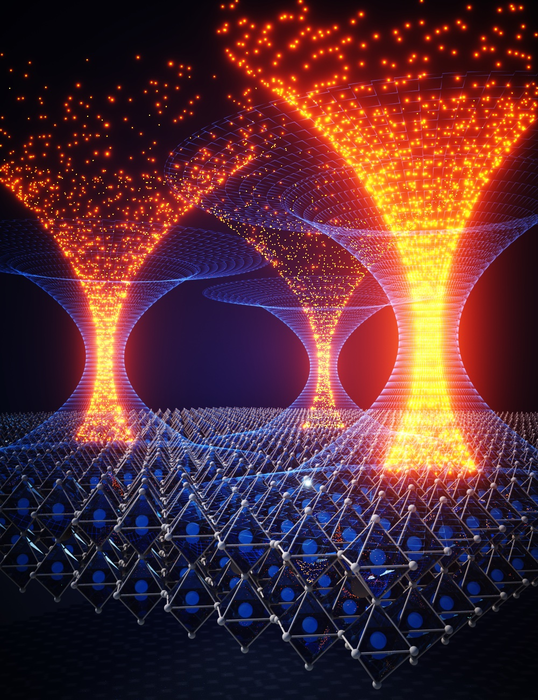Though scientists have been able to rapidly reach high solar cell efficiencies using perovskite materials, the specific mechanisms allowing for these is not fully understood, and research carried out to date shows that what is going on inside the material is quite to different to crystalline silicon and other common PV cell materials.
Since perovskite films are typically made up of more individual elements, they end up with a disordered structure and a range of different defects. Different elements of this structure have been shown to both help and hinder efficiency and stability in the solar cell, and understanding why this is could allow scientists to tailor materials to have more of the ‘good’ and less of the ‘bad’.
Multimodal microscopy
This was the aim of scientists led by the University of Cambridge in the UK, who used a range of different imaging techniques to gain a full picture of the perovskite at the nano-scale. “What we see is that we have two forms of disorder happening in parallel,” explains PhD student Kyle Frohna, “the electronic disorder associated with the defects that reduce performance, and then the spatial chemical disorder that seems to improve it.”
Using different techniques that focused individually on the chemical, structural and optoelectronic properties of the perovskite, including a trip to the UK’s diamond light source synchrotron facility, they were able to paint a fuller picture of the material’s behavior. “The idea is we do something called multimodal microscopy, which is a very fancy way of saying that we look at the same area of the sample with multiple different microscopes and basically try to correlate properties that we pull out of one with the properties we pull out of another one,” continued Frohna. “These experiments are time-consuming and resource-intensive, but the rewards you get in terms of the information you can pull out are excellent.”
Popular content
Their findings are available in the paper Nanoscale chemical heterogeneity dominates the optoelectronic response of alloyed perovskite solar cells, published in Nature Nanotechnology. The results show that gradients in the structure push the charge into areas of the cell with fewer electronic disorders, and away from ‘traps’ that would reduce performance. “What we’ve found is that the chemical disorder – the ‘good’ disorder in this case – mitigates the ‘bad’ disorder from the defects by funneling the charge carriers away from these traps that they might otherwise get caught in,” said Frohna.
With this understanding, the group will be able to start working on ways to further mitigate the effects of one without also losing the positive effects. “Through these visualizations, we now much better understand the nanoscale landscape in these fascinating semiconductors – the good, the bad and the ugly,” said Cambridge University Assistant Professor in Energy Sam Stranks. “These results explain how the empirical optimization of these materials by the field has driven these mixed composition perovskites to such high performances. But it has also revealed blueprints for design of new semiconductors that may have similar attributes – where disorder can be exploited to tailor performance.”
This content is protected by copyright and may not be reused. If you want to cooperate with us and would like to reuse some of our content, please contact: editors@pv-magazine.com.



By submitting this form you agree to pv magazine using your data for the purposes of publishing your comment.
Your personal data will only be disclosed or otherwise transmitted to third parties for the purposes of spam filtering or if this is necessary for technical maintenance of the website. Any other transfer to third parties will not take place unless this is justified on the basis of applicable data protection regulations or if pv magazine is legally obliged to do so.
You may revoke this consent at any time with effect for the future, in which case your personal data will be deleted immediately. Otherwise, your data will be deleted if pv magazine has processed your request or the purpose of data storage is fulfilled.
Further information on data privacy can be found in our Data Protection Policy.